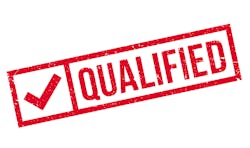NFPA 70E: Electrical Safety Training Requirements — Part 1
NFPA 70E says that unqualified persons “shall be trained in, and familiar with, any electrical safety-related practices necessary for their safety” [110.6(A)(2)]. However, it has very detailed training requirements that apply to qualified persons.
Those are summed up in 110.6(A)(1): “A qualified person shall be trained and knowledgeable in the construction and operation of equipment or a specific work method and be trained to identify and avoid the electrical hazards that might be present with respect to that equipment or work method.”
The details follow in 110.6(A)(1)(a) through (f). You need to read the actual standard, but here is the gist of it:
a. The qualified person must be familiar with procedures, personal protective equipment, insulating tools, etc.
b. Being qualified for one task doesn’t mean you’re qualified for all tasks.
c. People permitted to work within the limited approach boundary must be trained in the four areas delineated in 110.6(A)(1)(c)(1) through (4). For example, able to determine the nominal voltage of exposed energized parts.
d. A person undergoing on-the-job training to be a qualified person is considered a qualified person if under the direct supervision of a qualified person.
e. You must be able to demonstrate how to correctly select and use an instrument to determine the absence of voltage.
f. The employer shall determine whether the qualified person is complying with the required safety-related work practices.
About the Author

Mark Lamendola
Mark is an expert in maintenance management, having racked up an impressive track record during his time working in the field. He also has extensive knowledge of, and practical expertise with, the National Electrical Code (NEC). Through his consulting business, he provides articles and training materials on electrical topics, specializing in making difficult subjects easy to understand and focusing on the practical aspects of electrical work.
Prior to starting his own business, Mark served as the Technical Editor on EC&M for six years, worked three years in nuclear maintenance, six years as a contract project engineer/project manager, three years as a systems engineer, and three years in plant maintenance management.
Mark earned an AAS degree from Rock Valley College, a BSEET from Columbia Pacific University, and an MBA from Lake Erie College. He’s also completed several related certifications over the years and even was formerly licensed as a Master Electrician. He is a Senior Member of the IEEE and past Chairman of the Kansas City Chapters of both the IEEE and the IEEE Computer Society. Mark also served as the program director for, a board member of, and webmaster of, the Midwest Chapter of the 7x24 Exchange. He has also held memberships with the following organizations: NETA, NFPA, International Association of Webmasters, and Institute of Certified Professional Managers.
